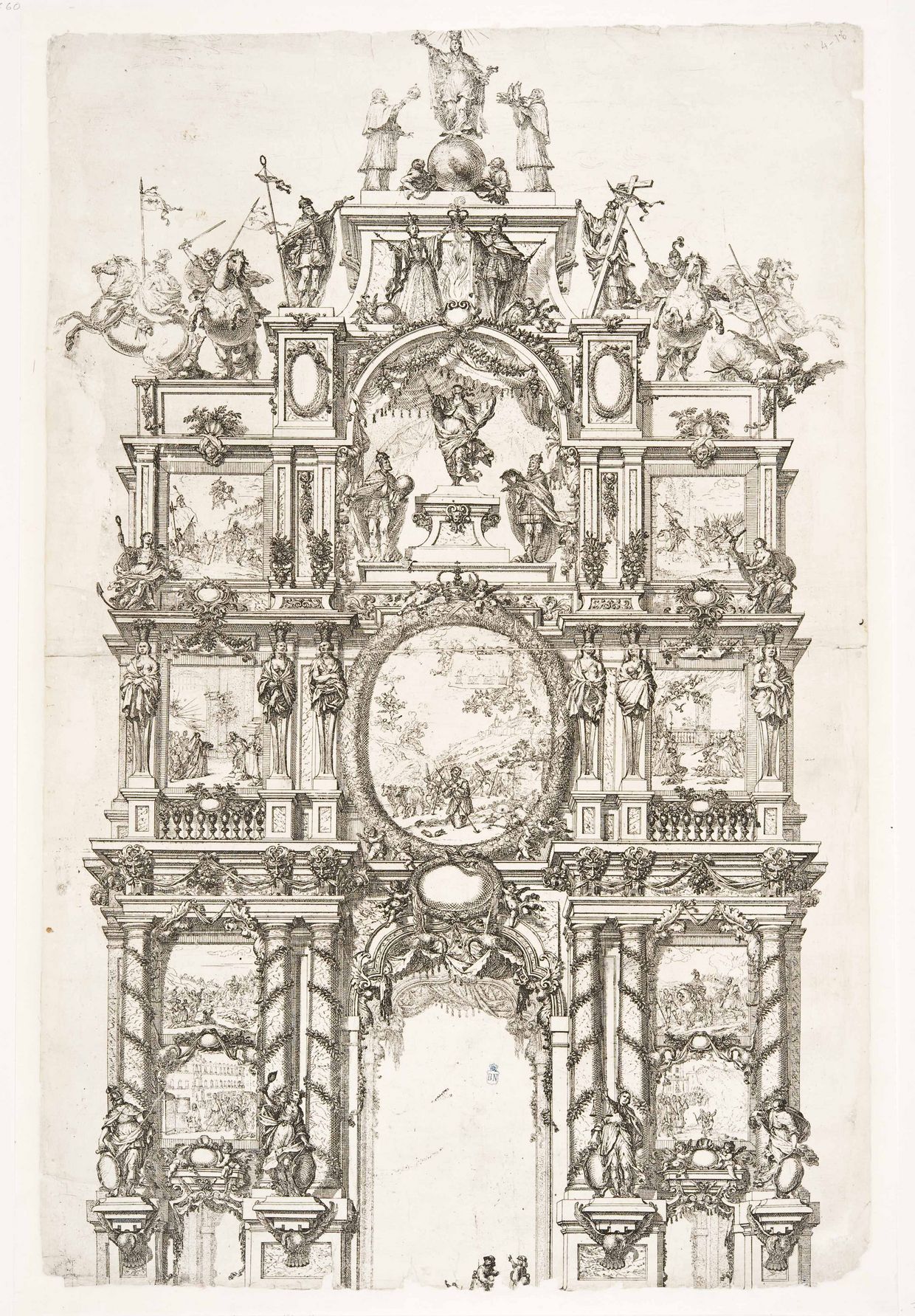The Triumphal Arch at the Puerta del Sol in Madrid
for the Royal Entry of Marie Louise d’Orléans (1680)
Teresa Zapata Fernández de la Hoz
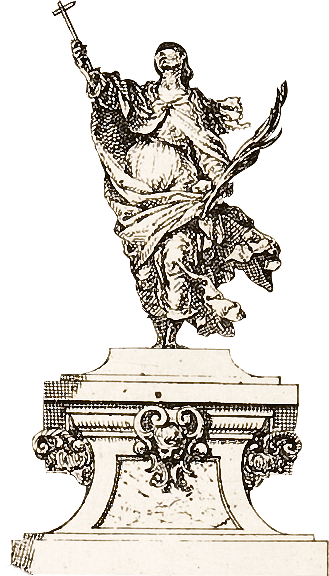
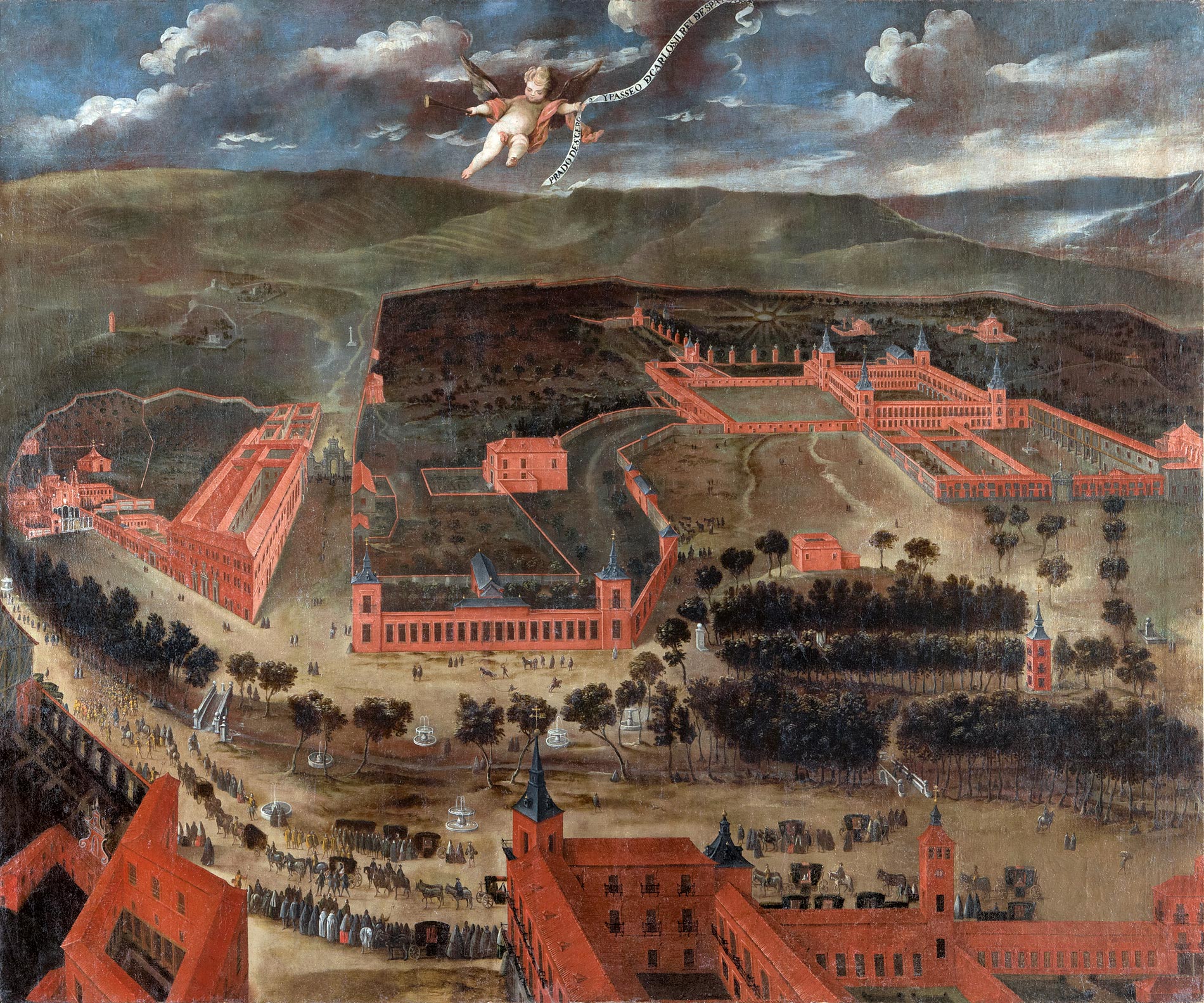
On Saturday, January 13, 1680, at around 11 in the morning, Marie Louise d‘Orléans, the young and beautiful niece of Louis XIV, married by proxy to the Spanish monarch Charles II, passed through the new stone-built doorway constructed for the occasion by Melchor de Bueras at the exit of the palace of Buen Retiro, preceded and followed by a spectacular entourage.
Find out more about Melchor de Bueras’ new stone-built doorway
The new stone-built doorway, constructed by Melchor de Bueras for the entrance of Queen Marie Louise d’Orléans, first wife of Charles II, was reused for the entrance of his second wife, Maria Anna of Neuburg, who made her triumphal entrance in Madrid in 1690. For this last occasion, the commemorative inscription of the lintel cartouche was changed for a new legend. The work was restored in 1922 by Madrid’s municipal architect Luis Bellido and is currently located opposite the Casón del Buen Retiro.
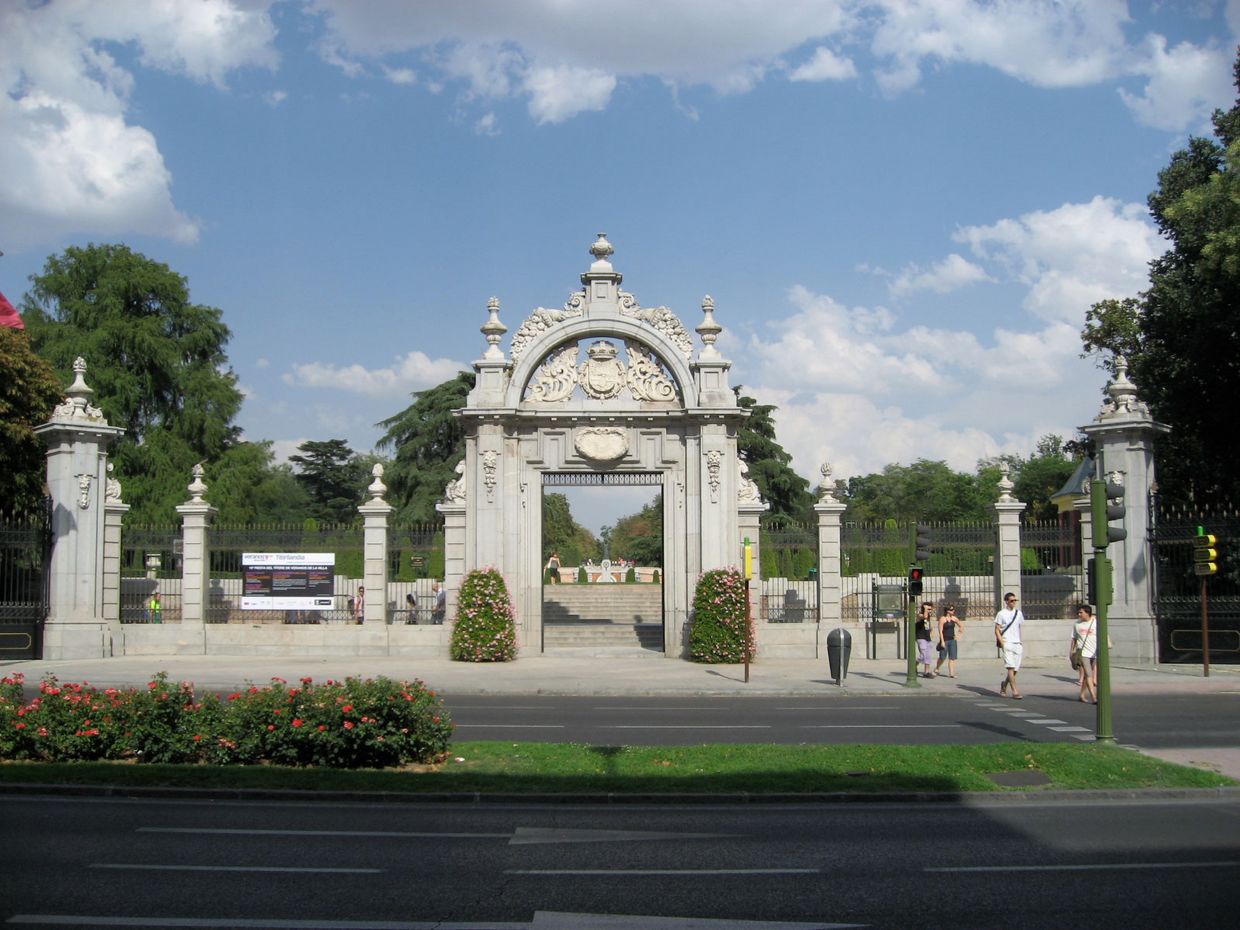
The Queen’s “look” for her triumphal entry
The queen wore a flame-coloured dress, an expensive garment specially made for the occasion, with rich silver- and gold-thread embroidery of foliage motifs, and wide sleeves trimmed with white lace, according to the fashion of the moment. The neckline was adorned with diamonds, and the back of her headdress with the Margarita Pearl, known as “The Pilgrim”, unique in the world. She also wore a ring with the 58-carat “King's Great Diamond”, likewise unique for its size and perfection.

Find out more about this painting and its companion, the equestrian portrait of Carlos II, which adorned the main facade of the Arch of Santa María.

Both canvases were painted by Francisco Rizi, painter of the King's Chamber, expressly commissioned by Charles II, and flanked the main painting Diana and Venus in their carriages holding a yoke of flowers, of which remains only a print of the engraving by Diego González de Vega and Pedro Ruiz González. The rainbow that begins in its upper angles is a symbol of serenity and peace, virtues personified by the goddess Iris, messenger of the goddesses, who offered their gifts to the royal couple. The same artists also recorded the main painting on the back of the arch, Julia making peace between Julius Caesar and Pompey, of which another print is preserved; both engravings served as illustrations for the book on the (royal) entry.
Triumphal arches on the official route
Four triumphal arches were erected along the route:
The Prado Arch
The Prado Arch, dedicated to the Church and located at the entrance to the Carrera de San Jerónimo.
The Arch of the Italians
The Arch of the Italians, dedicated to Justice, erected in the Carrera de San Jerónimo at the Italian Hospital.
The Puerta de Sol Arch
The Puerta de Sol Arch, dedicated to Religion, located in the center of the square.
The Arch of Santa María
The Arch of Santa María, dedicated to the Peace with France, located at the parish of Santa Maria de la Almudena.
Other ornaments on the queen’s official route
In addition to the four triumphal arches, the City financed other spectacular decorations, such as the so-called “Calle de los Reinos”, a gallery of niches leading from the gate of the Real Sitio del Buen Retiro to the Carrera de San Jerónimo.
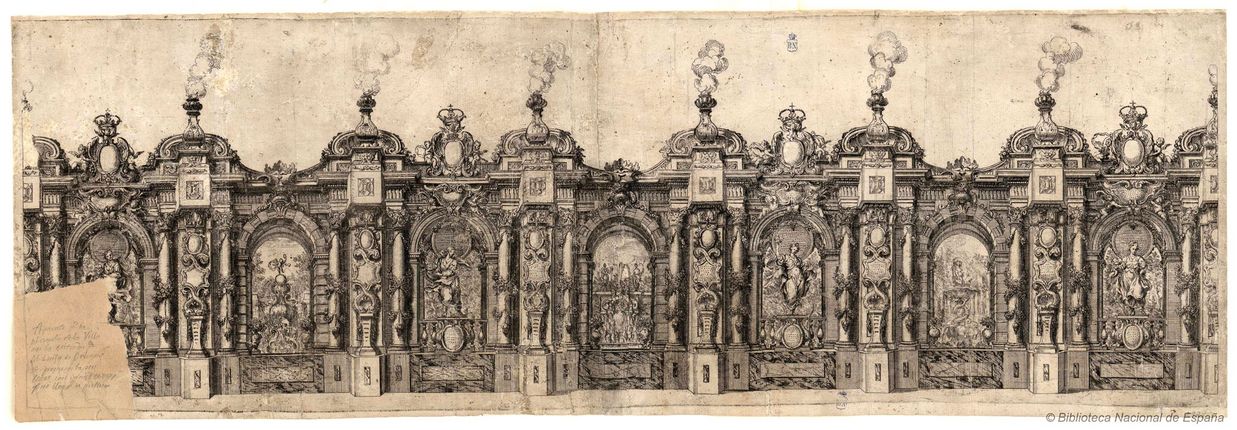
The Triumphal Arch at the Puerta del Sol
Among all the triumphal arches erected, the most spectacular was that of Puerta del Sol, the only one with four façades. In this presentation, we are going to analyse the main façade.
It had a height of more than 45 metres and was crowned by the statue of Religion, approximately six metres high.
The chosen layout was that of Francisco de la Torre, master joiner, who realized it in wood and with carving ornaments.
The numerous sculptures that adorned the arch were commissioned to Pedro Alonso de los Ríos, Manuel Gutiérrez, Enrique de Cardona and Mateo Rodríguez, who had to manufacture them according to the conditions of José del Olmo, master builder of the City of Madrid.
The arch was decorated with 22 paintings, commissioned to Matías de Torres (1635–1711), who was also in charge of painting the architecture of that ephemeral structure imitating marble and jasper.
The conditions of the contract were established by Juan Carreño (1614–1685), the King's chamber painter, with whom other painters collaborated.
Iconography of the main façade of the Triumphal Arch at the Puerta del Sol
Sculptures
Paintings
The City Council planned a book with the detailed description of the four arches and all the other ephemeral decorations, illustrated with engravings.
For the publication of the description of the royal entry, the painters responsible for the arches were required to carry out two etched plates of the front and the back side of each arch – except for Matías de Torres who had to produce four engravings –, in addition to other smaller etchings. A few years ago a copperplate with the engraving of the portraits of Charles II and Marie Louise inside a Double medallion with their heraldic animals Eagle and Lion appeared on the art market. This etching is the only one found so far of the 58 copperplates commissioned by the City Council and which might correspond to the medal of the kings that centered the decoration of the Plaza de la Villa, designed by Claudio Coello and painted by Francisco Solís.
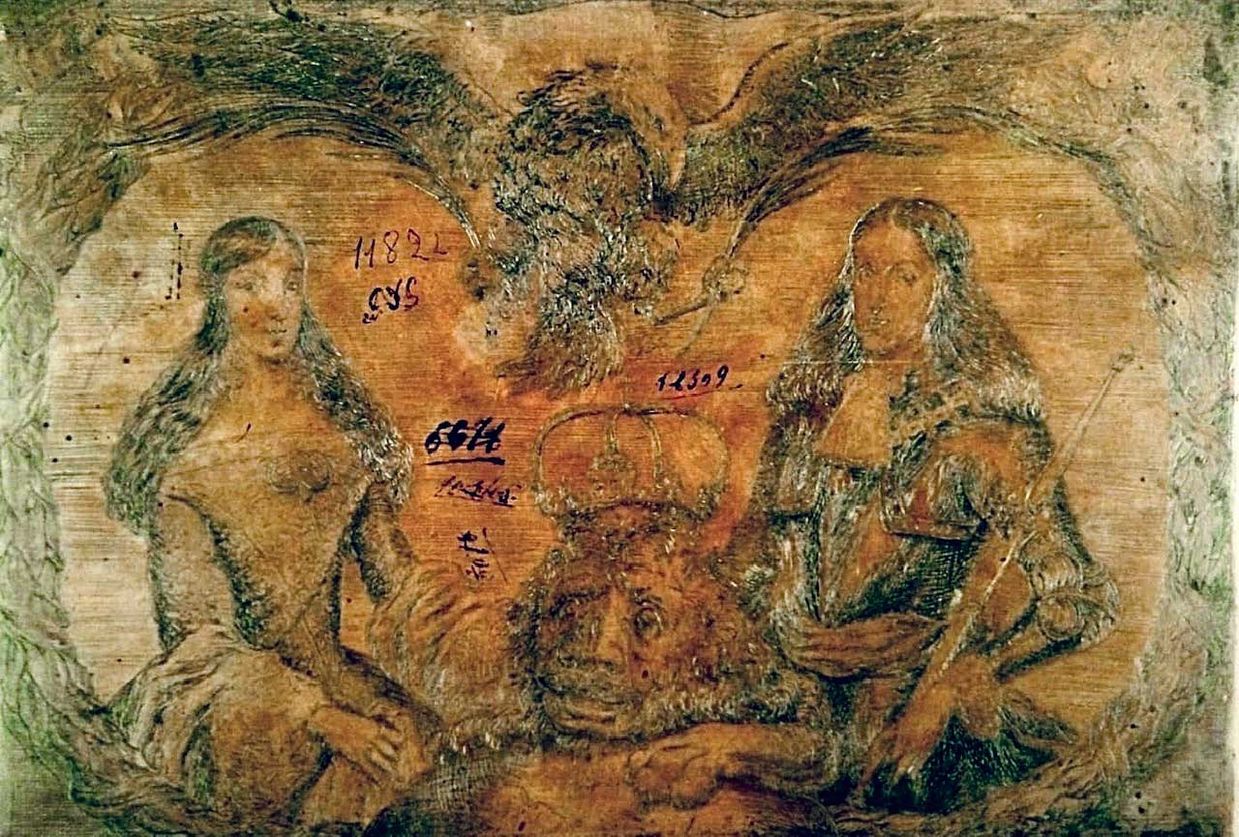
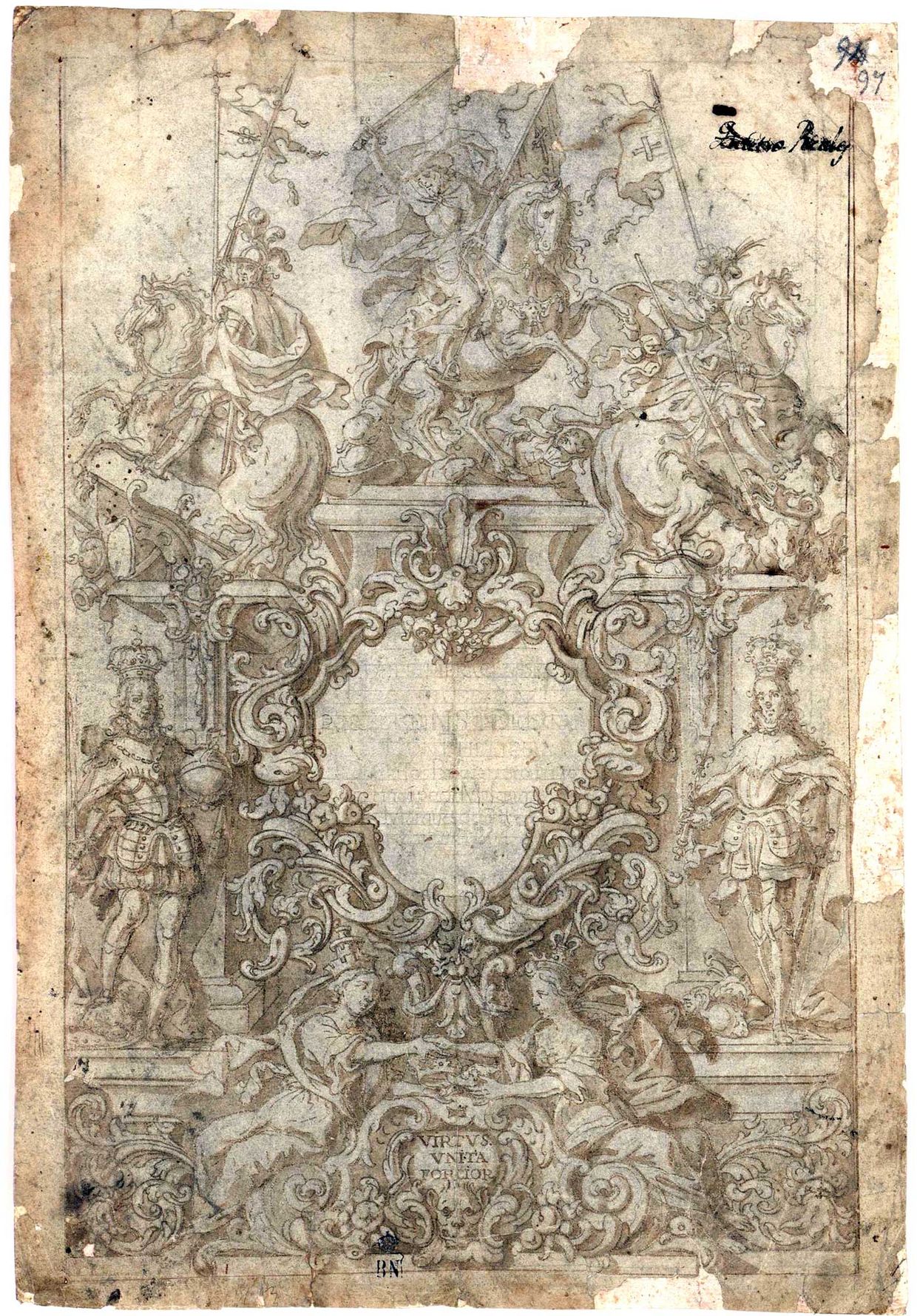
The National Library of Spain keeps a drawing by Claudio Coello that possibly corresponds to the cover of the book commemorating the royal entry of Marie Louise d’Orléans. The characters on horseback are the same as those of the Puerta del Sol Arch – Dionisio, Santiago and Jorge – with minor differences; Saint Ferdinand and Saint Louis resemble Charles V and Charlemagne in the same arch; the two seated female figures, Spain and France with their distinctive crowns, as well as the circular ornaments that frame them, also refer to the painter.
Bibliography (selection)
Teresa Zapata Fernández de la Hoz, “Nuevos datos sobre la antigua puerta del Real Sitio del Buen Retiro”, Anales del Instituto de Estudios madrileños, 23 (1986), 45-50.
Teresa Zapata Fernández de la Hoz, “Proyecto del Ayuntamiento madrileño para el libro de la entrada en la corte de la reina María Luisa de Orleans (1680)”, Villa de Madrid, 105-106 (1991), 3-27. https://dialnet.unirioja.es/servlet/articulo?codigo=5354919
Teresa Zapata Fernández de la Hoz, Arquitecturas efímeras y festivas en la corte de Carlos II: las Entradas Reales de María Luisa de Orleans y Mariana de Neoburgo (Tesis doctoral), Ediciones de la Universidad Autónoma de Madrid, Madrid, 1993, (microfichas, BNE).
Teresa Zapata Fernández de la Hoz, La entrada en la Corte de María Luisa de Orleans. Arte y Fiesta en el Madrid de Carlos II, Fundación de Apoyo a la Historia del Arte Hispánico, Doce calles, Madrid, 2000.
Teresa Zapata Fernández de la Hoz, “Unpublished Drawings by Matías de Torres (1635–1711)”, Master Drawings, Drawings in Spain, Vol. XLVIII, 4 (2010), pp. 482-497.
Credits
Title: The Triumphal Arch at the Puerta del Sol in Madrid for the Royal Entry of Marie Louise d’Orléans (1680)
Author: Teresa Zapata Fernández de la Hoz (Independent Researcher) teresa.zfh@gmail.com
Editor: Carmen González-Román (University of Málaga)
Translation: Alberto Lanzat and Andrea Sommer-Mathis
Web design: Kunsthistorisches Museum – Visual Media, Vienna
Source of the images: Madrid, Spanish National Library. Madrid, Abelló Collection. Toledo, City Hall. Madrid, Royal Academy of Fine Arts of San Fernando. London, The Courtauld Gallery.
